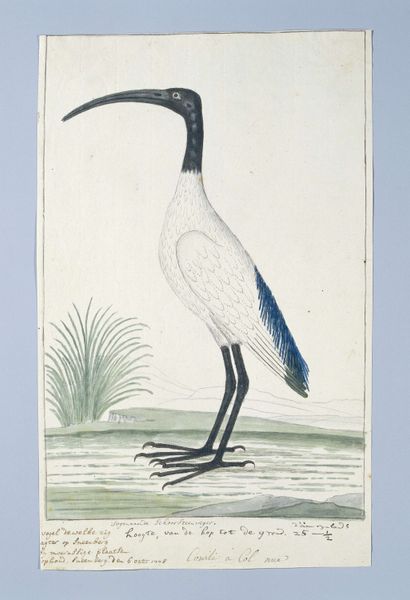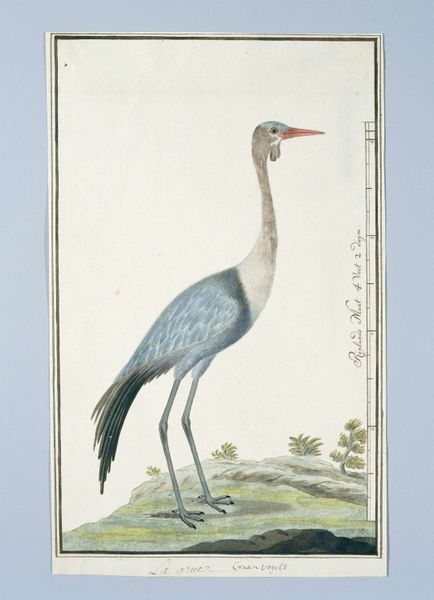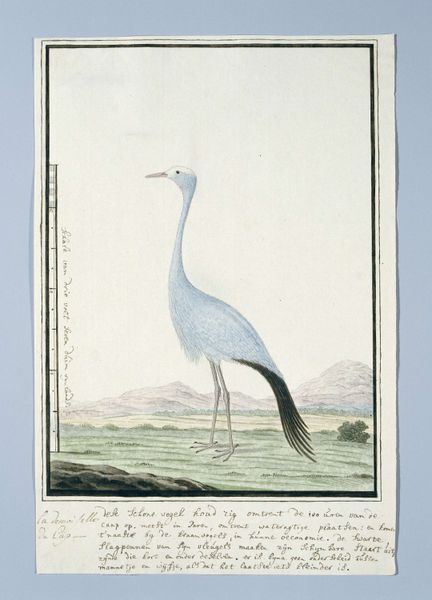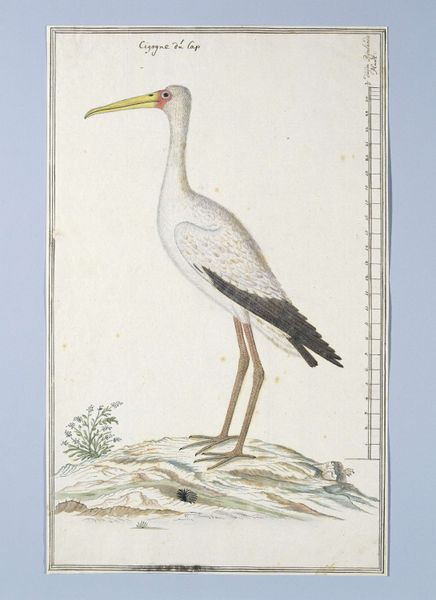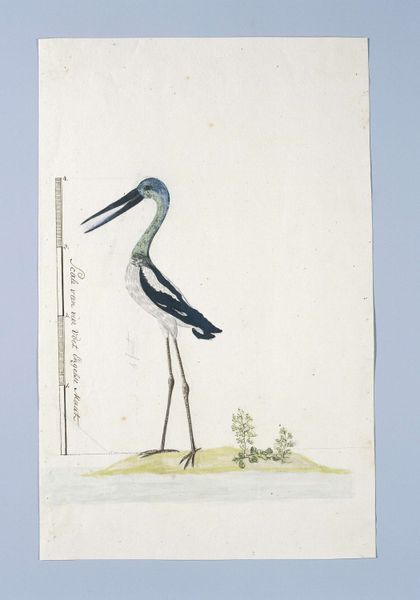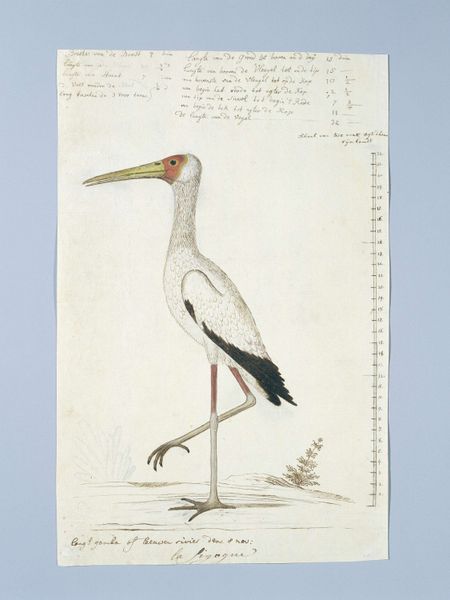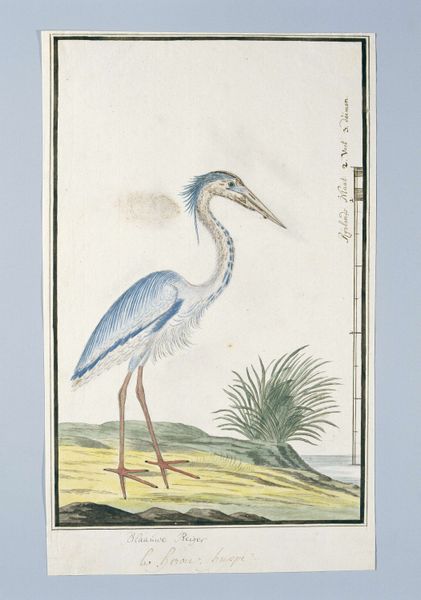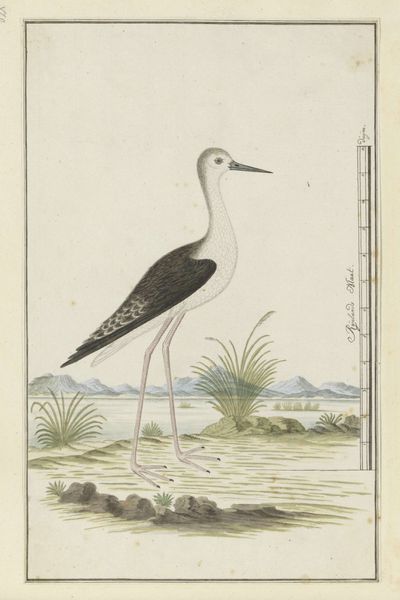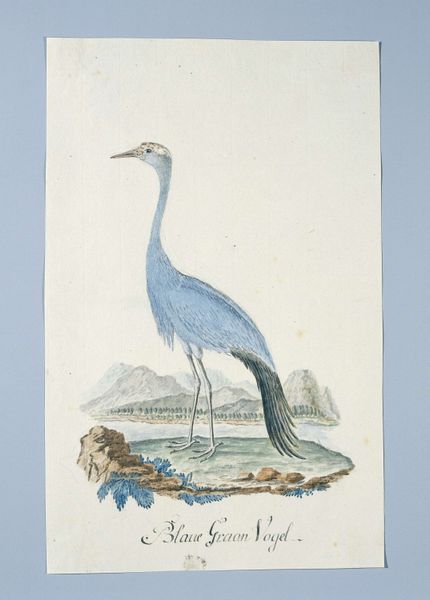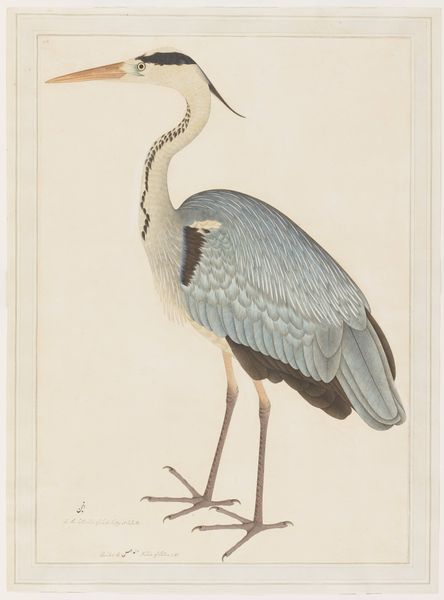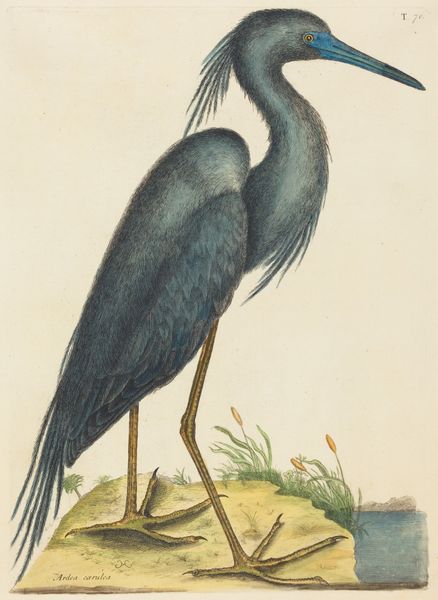
drawing, coloured-pencil, watercolor
#
portrait
#
drawing
#
coloured-pencil
#
water colours
#
narrative-art
#
watercolor
#
coloured pencil
#
watercolour illustration
Dimensions: height 660 mm, width 480 mm, height 497 mm, width 350 mm, height 433 mm, width 284 mm
Copyright: Rijks Museum: Open Domain
John Hunter, a surgeon, naval officer, and naturalist, made this drawing of a Black-necked Stork around the late 18th or early 19th century. It is a watercolour on paper. Hunter was part of the colonial project. He traveled to New South Wales, Australia, where he likely made this image. It's inscribed "Vogel van Port Jackson," meaning "Bird from Port Jackson" in Dutch. The region was of course home to Aboriginal people, for whom the arrival of the British had a devastating impact. At this time, scientific illustration was an important tool of empire. Naturalists depicted flora and fauna, documenting the natural resources that might be exploited. These images would often reinforce a sense of colonial control, suggesting that the land and its inhabitants were available for claiming, naming, and cataloging. To understand this image fully, we can consult archival records, travel logs, and scientific treatises to understand the context in which it was made. In doing so, we can better reflect on the complex relationship between art, science, and colonialism.
Comments
No comments
Be the first to comment and join the conversation on the ultimate creative platform.
